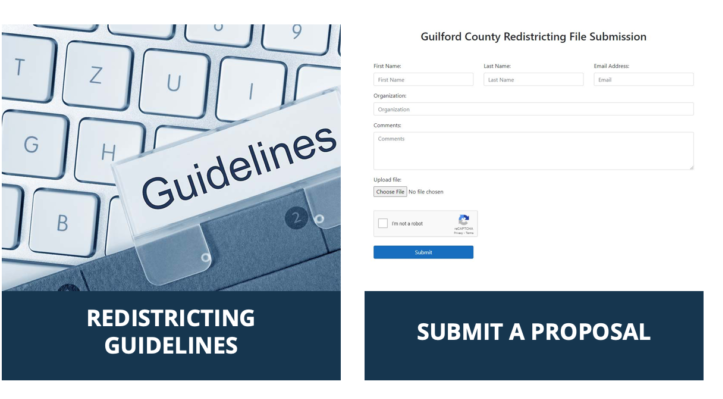Guilford County has begun the process of redrawing county Board of Commissioners district lines due to the new population data in the 2020 US Census, and a new web-based map-drawing tool is online for anyone who wants to suggest a district map. The website to go to if you want to be a political cartographer for Guilford County this month is https://redistricting.guilfordcountync.gov.
The Guilford County Board of Commissioners worked out the final details with county staff at a Thursday afternoon, Sept. 16 work session. The county also set a deadline of 5 p.m. on the last day of September to get your maps submitted.
Once each decade – after the new census data is available – county commissioner districts in North Carolina have to be reviewed – and usually redrawn –so that each district is “substantially equal” in population. That assures that each commissioner represents roughly the same number of constituents – something meant to preserve equal representation for all citizens.
Guilford County officials are now encouraging any interested county residents or political aficionados to take part in the process by submitting newly drawn district maps that meet the criteria and by providing comments on map proposals.
Next month, those submissions will be reviewed by the Democratically controlled Board of Commissioners, which will make its final decision in November on the new commissioners’ district lines that will go into effect in 2022.
The board must be finished with the redistricting process by Thursday, Nov. 18.
The county’s web-based “Redistricting Portal” at the address above provides users with the population data, the criteria that maps must meet to be legally acceptable and an instructional video showing how to use the tool.
State law requires the commissioners’ districts be redrawn when the populations of the districts become substantially unequal. The new census data shows that the current Board of Commissioners districts exhibit a difference of over 20 percent between the populations of the largest and the smallest. That’s more than double the 10 percent difference that creates a legal requirement for redistricting in North Carolina.


I have a novel suggestion: rather than apportion districts by population; apportion them by weight.
I’ve read this week that 57% of our population is overweight: and that 35% have a BMI of 30 or more, which defines them as obese. That includes me.
I can see it now.
Those of us who are obese, can waddle into the voting booth; and qualify to vote by weight. I can see it now, we porkers can train with pizza, sody pop, doughnuts, french fries, etc; and thus when we are carted into the voting booth, we can qualify on the scales. So our votes will have more weight than the under-caloried.
It’s the new way of life (and early death).